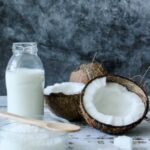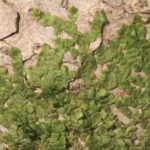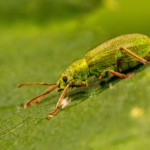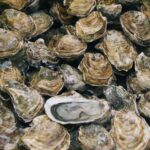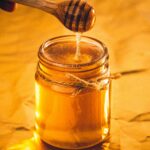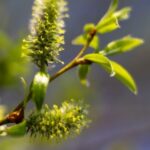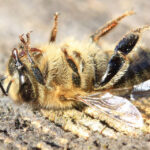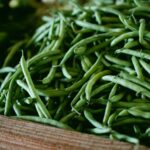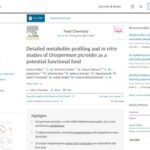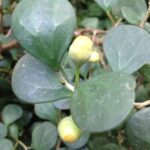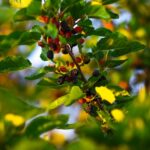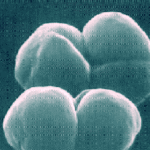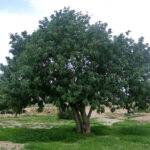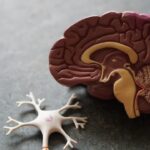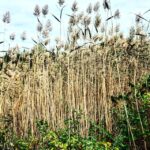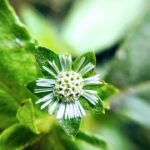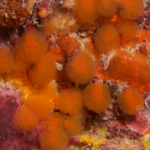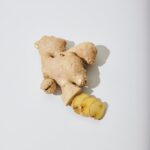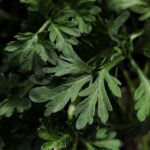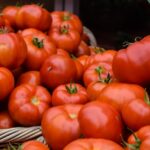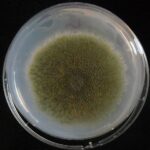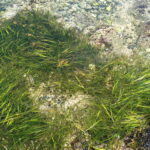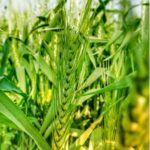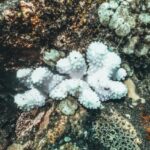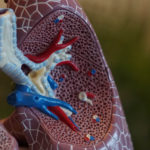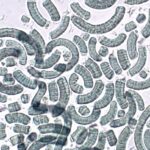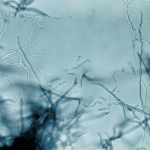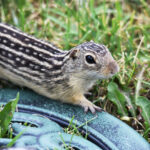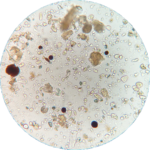Here is a list of discoveries made by independent research groups using the SIRIUS software framework to enhance their metabolomics data analysis.
For more detailed stories, visit our blog.
These findings were neither conducted nor financed by our company.
-
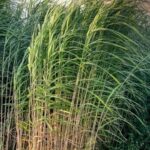
Diurnal carbohydrate and metabolite production in sugarcane and energy-cane reveals differences in growth strategies.
Silva et al. | Industrial Crops and Products
Loading... -

Untargeted 2D chromtography MS/MS approach unravels the complex structures of depolymerized lignin to turn it into valuable biomaterials.
E. Tammekiviet al. | Anal Chim Acta
Loading... -

Nutritional components of coconut flesh.
Guo et al. | Metabolites
Loading... -

Biochemical pathways and compounds of the unique stress response of liverworts with potential cytotoxicity against human cancer cell lines.
Blatt-Janmaat et al. | Metabolomics
Loading... -

Interplay between dietary patterns, plasma metabolites, and colorectal cancer risk
S. Bodén | Sci Rep
Loading...new -

Potential to enhance the skin health: changes in the skin metabolome more pronounced than in microbial composition.
Li et al | Front Med
Loading... -

Environmental fate of formulation ingredients in commercial pesticides.
Ghosson et al. | Journal of Mass Spectrometry
Loading... -

Plants tailor their defenses based on the presence of herbivores rather than herbivore identity.
Mezzomo et al. | Ecol Evol
Loading... -

Method to reveal the chemical potential of marine microorganisms based on microbial extracts.
Loarer et al. | Microorganisms
Loading... -

New degradation metabolites and potentioal metabolic pathway of novel designer drug O-PCE identified.
R. Magny et al. | J Pharm Biomed Anal (2024)
Loading...new -

Kakadu plum extracts shows antiproliferative effects against MCF7 breast adenocarcinoma cells.
Dissanayake et al. | Food Bioscience
Loading... -

Zinc anodes, used to protect against corrosion in marine environments, affect the metabolism of oysters.
Imbert-Auvray et al. | Metabolites
Loading... -

Honey ia a bio-indicator for flame retardants in air.
G. Leung et al | Chemosphere
Loading...new -

Different paths to chemical diversity in highland and lowland willow species.
Volf et al. | Ecology Letters
Loading... -

New protocol to identify structurally related impurities in pesticides for assessing their environmental impact and risks.
Li et al. | Microchemical Journal
Loading... -

Ketamine distribution in the brain improves understanding on how ketamine traverses the blood-brain barrier.
T. Vallianatou et al. | ACS Chem Neurosci (2024)
Loading...new -

Domesticated common bean varieties exhibit reduced metabolic diversity and specialization compared to their wild counterparts.
de Souza et al. | Plant J
Loading... -

Chemical composition and anti-inflammatory properties of prickly goldenfleece could be a valuable source of bioactive compounds for food and health applications.
Saber et al. | Food Chemistry
Loading... -

Stable isotope labeling serves as a detection strategy to distinguish biologically relevant features from background signals.
Favilli et al. | Anal Bioanal Chem
Loading... -

Identification of 100 light-absorbing brown carbon molecules, 33 of which have never been reported before.
Xing et al. | JGR Atmospheres
Loading... -

Biotransformation of levofloxacin in wastewater by basidiomycete fungal strains leads to decreased antibiotic activity.
A. B. Ayed et al. | Ecotoxicology and Environmental Safety
Loading...new -

Metabolomic profiles of three Ficus species to investigate phytochemistry, chemotaxonomy and potential medical use.
Bakry et al. | Journal of Pharmaceutical and Biomedical Analysis
Loading... -

Marine prokaryotes hold vast potential for discovering new drug candidates.
Wei et al. | Microbiome
Loading... -

Terpenoids might contribute to the success of M. calvescens as an invasive species.
Clerissi et al. | Microorganisms
Loading... -

Microbial decomposition of human cadavers as data basis for a forensic tool to predict time since death.
Z. M. Burcham et al. | Nat Microbiol (2024)
Loading...new -

Plant extracts as reducing agents for the environmentally friendly synthesis of silver nanoparticles.
Salgado et al. | Surfaces and Interfaces
Loading... -

Neuroprotective effects of secondary metabolites in mulberry plant extracts on Alzheimer’s Disease.
N. Hegazi et al | Food Funct (2014)
Loading...new -

The methanogenic archaeon Methanosarcina barkeri can reduce naturally occurring iron oxides in aquatic sediments' methanogenic zones.
Eliani-Russak et al. | Front Microbiol
Loading... -

Antioxidant-rich extract from Ceratonia siliqua pods with potential for a biocompatible topical therapy.
De Luca et al. | Antioxidants
Loading... -

Ash trees resistant to ash dieback could also help protect against emerald ash borer infestations.
Gossner et al. | New Phytologist
Loading... -

Metabolites of Aspergillus niveus are promising leads for developing new potent cholinesterase inhibitors against Alzheimer's disease.
Hamed et al. | Molecules
Loading... -

Highly halogenated compounds are potential contributors to the high antibacterial activity in tetrasporophyte stage of red alga Asparagopsis armata.
Parchemin et al. | Marine Drugs
Loading... -

FODMAPs are influencing health-positive metabolites in plasma of irritable bowel syndrome patients.
Nordin et al. | Am J Physiol Regul Integr Comp Physiol.
Loading... -

Metabolites from citrus juices improve herbal therapy against paracetamol-induced liver toxicity.
Shalaby et al. | ACS Omega
Loading... -

Specific metabolites identified as potential selection traits to improve Fusarium resistance in maize.
Cao et al. | Front Plant Sci
Loading... -

Unique phytochemical fingerprints of Phragmites australis lineages suggest that metabolomic evenness may be a critical trait within plant species.
Salgado et al. | J Chem Ecol
Loading... -

Unstable metabolites in neonatal dried blood spot should be carefully monitored in long-term storage.
Ottosson et al. | J Am Soc Mass Spectrom
Loading... -

Molecular explanation for the longer time needed to establish the low-compatibility interaction between the ectomycorrhizal fungus Tricholoma vaccinum and pine.
Ezediokpu et al. | Front Microbiol
Loading... -

False daisies contain anti-inflammatory, antioxidant and anti-collagenase ingredients with anti-aging potential .
Le Cabec et al. | S. Afr J Bot
Loading... -

The microbial diversity and metabolite production of the tropical ascidian Eudistoma vannamei reveals its role as a holobiont rich in secondary metabolites.
A. Bauermeister et al. | Mar Environ Res
Loading...new -

Metabolite from actinobacteria strain from Egyptian soil is a promising candidate as a multidrug efflux pump inhibitor.
Hamed et al. | Metabolites
Loading... -

48 antioxidation active metabolites identified in Ginger.
Wang et al. | Food Chem
Loading... -

Cortisol, sumatriptan, and glutamine are crucial metabolites associated with the treatment of migraines with triptans.
Kogelman et al. | Sci Rep
Loading... -

Metabolites identified from A. absinthium extracts support the traditional use for stomach problems.
Boeing et al. | J Ethnopharmacol.
Loading... -

Endophytic bacteria aid in controlling fusarium wilt disease and enhancing tomato plant growth through bioactive secondary metabolites.
Sriwati et al. | Physiological and Molecular Plant Pathology
Loading... -

Microbial biocontrol agents lead to major metabolic re-programming in fungi
B.R. Fernando Devasahayam et al. | J Plant Dis Prot (2024)
Loading...new -

155 new brown carbon chromophores identified in aqueous-phase reactions of α-dicarbonyls with ammonium or amines.
Yang et al. | Environ Sci Technol
Loading... -

Microbiome of eelgrass produces broad-spectrum antibiotics with potent activity against waterborne pathogens.
Tasdemir et al. | Sci Total Environ
Loading... -

Metabolome composition of mature and immature seeds from different cereal and leguminous plants.
Saied et al. | Food Chem
Loading... -

New ecdysteroids with potential skin aging therapeutic benefits discovered in the Korean plant Ajuga spectabilis.
Park et al. | ACS Omega
Loading... -

Decreased concentration of two carotenoids after UV filter explosion might be indicative of an alteration in the photosynthetic capacity of corals.
Clergeaud et al. | Metabolites
Loading... -

Metabolite linked to dual-species biofilm pathogenesis in cystic fibrosis identified.
Uzi-Gavrilov et al. | Angewandte Chemie International Edition
Loading... -

Significant differences in metabolite abundance and composition among microalgae Spirulina, Chlorella, and Amphora.
N. Hegazi et al. | Sci Rep (2024).
Loading...new -

DX protein enhances expression of specialized metabolic pathways in the Streptomyces genomes and might lead to the discovery of novel bioactive molecules.
Apel et al. | Front Cell Dev Biol
Loading... -

White adipose tissue plays a crucial role in regulating metabolism throughout the hibernation cycle.
Heinis et al. | Front Physiol
Loading... -

Identify and link microbial metabolites to their producers with microbeMASST and SIRIUS.
S. Zuffa et al. | Nat Microbiol
Loading...new -

37 unique secondary metabolites identified in the metabolome of the invasive Guinea grass.
Morrison et al. | Ecosphere
Loading...
